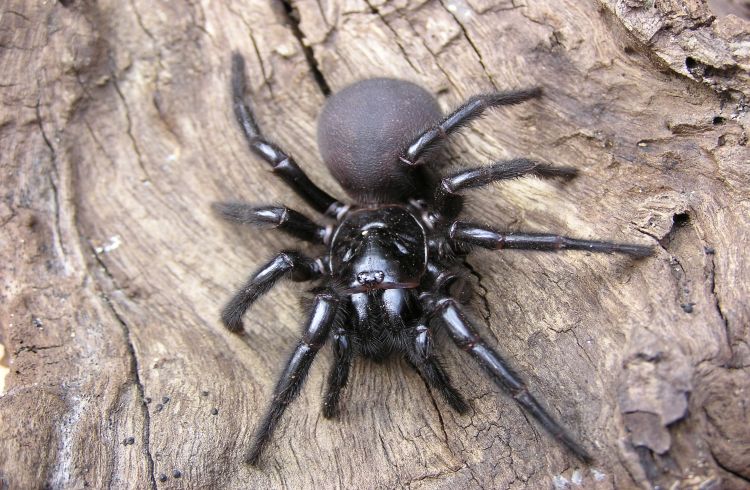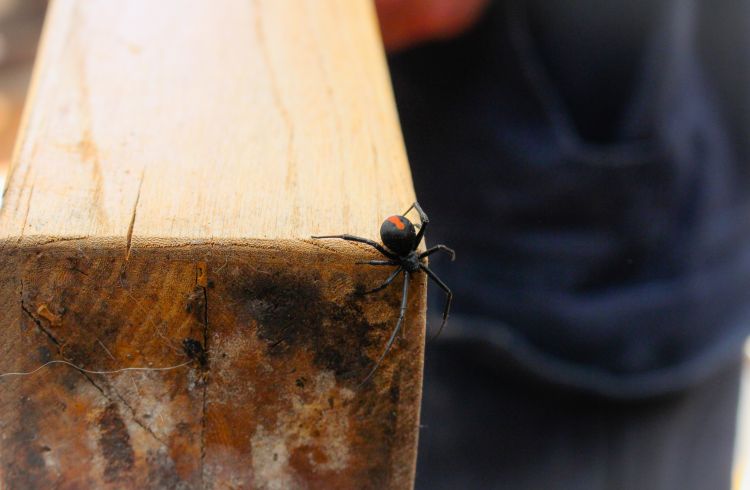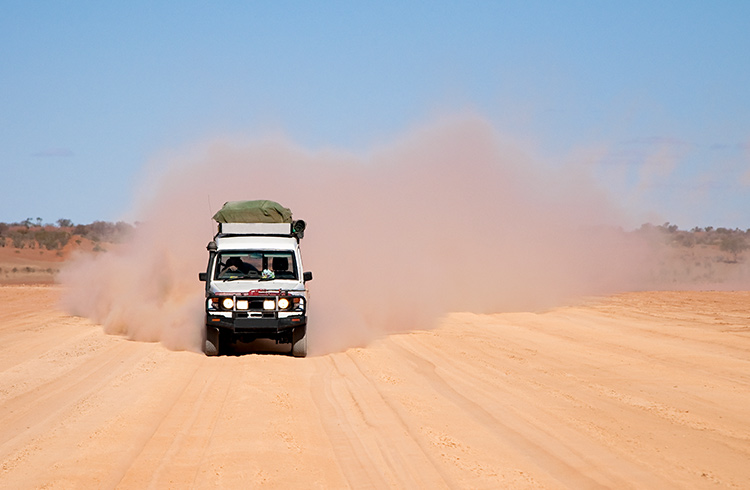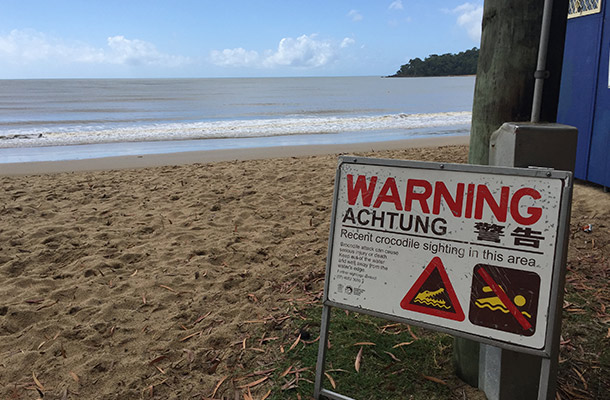Australian Spiders: What Travelers Need to Know to Stay Safe
From bite prevention to first aid, these are the things travelers need to know about dangerous Australian spiders. Find out how to avoid spider bites, what to do if you're bitten, and how to identify a spider.
 Photo © Getty Images/James van den Broek
Photo © Getty Images/James van den Broek
Australia is well-known for its spiders – it's home to more than 2,000 species. While it's true some of these are among the most venemous in the world, the vast majority are not dangerous to humans. All spiders have venom glands, but only some species have fangs large enough to puncture the skin and cause a reaction.
Spider season in Australia is typically the warmer months, when many species (especially larger ones) are looking for mates. Here's what you need to know about the species of spiders in Australia, which ones you should be wary of, and what to do if you are bitten.
- Dangerous spiders in Australia
- Other common Australian spiders
- Spider bite prevention
- First aid for spider bites
Dangerous spiders in Australia
The three spider species most likely to cause severe illness are:
Funnel-web spider
The Sydney funnel-web spider (pictured at the top of this article) is Australia’s most venomous spider, known to have caused 13 fatalities. No deaths have been recorded since an anti-venom was introduced in 1981. Nonetheless, it’s best to avoid being bitten, as bites can cause extreme soreness, abdominal pain, and difficulty breathing.
These large, glossy spiders aren't big fans of daylight so will hide away, in a small, web-lined outdoor burrows with lines radiating from the entrance, or often in shoes and clothing. Sometimes these spiders are found in or around swimming pools.
They can become aggressive if disturbed, often forming a characteristic strike pose with their front legs in the air and large fangs on show.
Other dangerous funnel-web spiders are the northern and southern tree funnel-webs. Fortunately, the anti-venom is effective for these species as well.
Funnel-web spider habitat extends primarily along the east coast of Australia, with summer/autumn being peak activity season.
Redback spider
Related to the North American widow spiders, these black and red beauties (sometimes orange too) like to hide away in dark, secluded spots such as letterboxes, under ledges, outdoor furniture, around BBQs and other hiding places; often decorated with sticky, haphazard webs.
Approximately 2,000 people are bitten every year by redback spiders. Their bite can be fatal in rare cases and should always be taken seriously – bites can cause pain, sweating (especially at the bite site), headache and vomiting. An anti-venom has been available since 1956 and around 250 cases are treated with anti-venom each year.

Mouse spider
These large spiders are often mistaken for funnel-web spiders. Their bites, though potentially as toxic, are often “dry” (meaning they have low levels of venom), and mouse spiders are much less aggressive than funnel-webs. However, bites can be deep and painful and should be treated as seriously as a funnel-web spider bite, especially since it’s difficult to tell the difference between the species.
Mouse spiders are found all over mainland Australia. Males are often seen in late summer when they are looking for mates.
Other common Australian spiders
White-tailed spider
Like many other species, white-tailed spiders like to hide and are usually only seen at night as they look for food. You’ll often see them after wet weather as they leave their hiding places and come into homes seeking shelter from the moisture. They are grey to black in color with a white tip on their abdomen (hence the "white tailed") and are common across Australia.
Huntsman spider
Found all over Australia, these guys aren't dangerous to humans, but they are fast movers and have a tendency to jump. They look scary because they can grow large, have long legs, and are hairy. However, they are excellent pest controllers, so if you have one hanging around your accommodation, leave it there to munch on bugs.
They like to hide out under tree bark, logs, and rocks. Unfortunately, they also like hiding under the sun visor in cars and have been known to scuttle across the dashboard or windscreen, so make sure you roll your windows up and close your sunroof overnight.

Spider bite prevention
- Always shake out your shoes, wetsuits, or clothes that haven't been worn for a while before putting them on, particularly if you have left them outside
- Avoid leaving clothes or towels on the floor
- Wear shoes when you're outside and also at night
- Check your bedding if it's on or close to the floor
- If you spot a spider in a swimming pool, don't assume it has drowned. Some spiders will survive off the air bubbles attached to their leg hairs for hours. Funnel-webs are known as the Aussie pool scuba divers of the spider world, so fish the spider out (carefully) with a pool net or avoid the pool and have a cool shower instead of risking being bitten underwater.
Planning a trip to Australia? Find out how travel insurance can cover medical emergencies, lost or stolen baggage, or other travel mishaps.
First aid for spider bites
If you are bitten, seek medical attention straight away. If safe to do, contain the spider for identification in a sealable container or take a photo of it. Otherwise, do your best to describe the spider once you arrive at the hospital, focusing on features such as size, color, patterning, where you were when bitten etc.
Treatment for a funnel-web spider bite
The main job of first aid for a funnel-web spider bite is to prevent the venom from passing through to the lymphatic system and eventually into the bloodstream. The pressure/immobilization technique (as for snake bite) does this by compressing surface tissues and reducing muscle movement, slowing the lymphatic flow.
- Keep the patient as calm and quiet as possible
- Call 000 (ambulance)
- Keep the affected limb down and patient still
- Apply a pressure bandage tightly, starting from the bitten area, bandage down to the end of the limb and then back to the top of the limb
- Bind a rigid splint onto the limb to prevent limb movement
Redback spider bite treatment
The treatment for a redback spider bite is different to that of a funnel web.
- Keep the patient as calm and quiet as possible
- Call 000 (ambulance)
- Keep the affected limb down and patient still
- Do not apply a compression bandage as this can make the pain worse
- Clean the area with soap and water
- Apply ice or a cold pack to the bite site
For other types of spider bites e.g white-tailed, huntsman
- Use an ice pack to lessen the pain and swelling
- Seek medical treatment
Related articles
Simple and flexible travel insurance
You can buy at home or while traveling, and claim online from anywhere in the world. With 150+ adventure activities covered and 24/7 emergency assistance.
Get a quote

No Comments